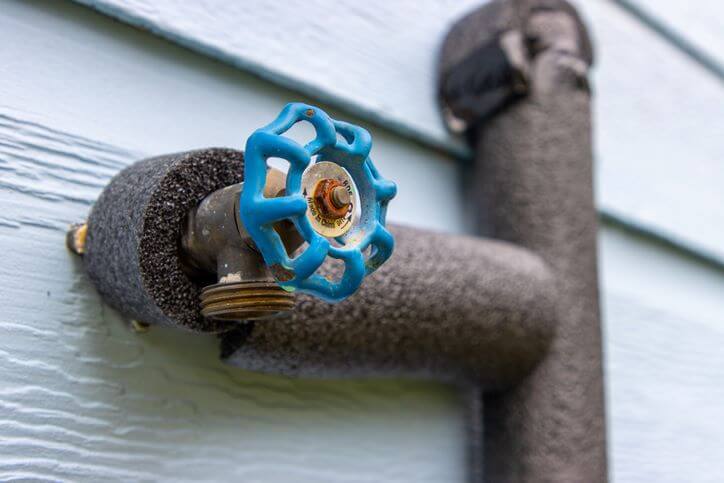Hours of Operation
- Standard Hours
- (Mon-Sat): 7:00 am – 5:00 pm
- Emergency Hours
- ($199 Dispatch Fee)
- (Mon-Sat): 5:00 pm – 9:00 pm
- (Sun): 7:00 am – 9:00 pm
Ah, winters! They bring a unique charm to our cities, but the snow and ice also bring a challenge many homeowners dread: frozen pipes. This common and serious issue can cause major inconvenience and even significant damage to your home. But there’s no need to let the cold get the better of you or ruin your holidays!
Rocket Plumbing believes in empowering our community with the right knowledge and tools to tackle these icy challenges. Our guide here is designed to help you identify, manage, and prevent frozen pipes, ensuring your home stays safe and cozy even in the harshest winters. So, gear up and get ready to face those frozen pipes with confidence, backed by the expertise of your trusted local plumbers at Rocket Plumbing.
But if you need a pro to repair your frozen pipes as soon as possible, Contact Rocket Plumbing Today!
When Jack Frost visits Chicago, he often leaves more than just a winter wonderland in his wake. One of the first signs of his handiwork in your home might be frozen pipes. Recognizing the early warnings can save you from a lot of trouble down the line. Here’s what to look out for:
If you spot one or more of these signs, it’s time to confirm and act. Here’s a quick guide:
Remember, the key is to act calmly and methodically. If you’re unsure about the proper approach or suspect a pipe has already burst, it’s time to call in the professionals. Call us at (773) 299-160 or read our next section on how to safely thaw frozen pipes!
Once you’ve identified a frozen pipe, it’s time to thaw it carefully. Here’s a guide combining practical steps with valuable insights:
A Word of Caution: Avoid using open flames like propane heaters, kerosene heaters, or blowtorches. These methods are hazardous and can cause more damage. Also, never leave heating devices unattended while in use.
Patience is Key: Thawing takes time. Start by opening cabinet doors to increase air circulation around the pipes and apply heat gently and evenly. Rushing the process can lead to more harm than good.
By following these steps, you can safely manage frozen pipes and prevent potential damage. However, if the situation seems overwhelming or you’re unsure, it’s time to call the experts at Rocket Plumbing. We’re here to help ensure your pipes are safely thawed, and your plumbing system remains intact.

As we brace for another Chicago winter, proactive measures are the key to avoiding frozen pipes. Insulating your exposed pipes, particularly in the colder areas of your home, like basements and garages, is a crucial first step. This simple action can provide a significant defense against freezing temperatures.
Equally important is maintaining a consistent temperature in your home. Resist the urge to lower your thermostat at night; a slightly higher heating bill is a small price to pay compared to the cost of dealing with burst pipes.
Additionally, during extreme cold snaps, a small but effective trick is to let your faucets drip slightly. This prevents water from remaining stationary within the pipes, where it can freeze and cause blockages or bursts.
Remember, a little preparation can go a long way in preventing winter plumbing woes. And if you need any assistance winterizing your plumbing, Rocket Plumbing is just a call away.
When winter throws its icy grip around your pipes, remember that Rocket Plumbing is just a phone call away. Whether you’re dealing with stubbornly frozen pipes or feeling uncertain about handling a plumbing issue, our team of experts is ready to jump into action. Equipped with the right tools and expertise, we’re prepared to tackle your frozen pipe challenges safely and efficiently.
At Rocket Plumbing, we understand that plumbing issues can be daunting, especially in the dead of winter. If you need help right away or are just looking to prepare your home’s plumbing for the cold months ahead, don’t hesitate to reach out. Contact Rocket Plumbing today, and let’s ensure your plumbing system is in peak condition to face the winter chill!